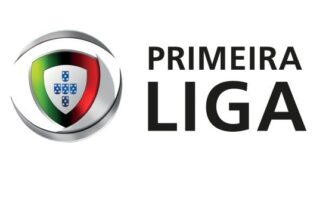In the high-stakes world of professional football, where transfer fees routinely soar into the tens of millions, a recent development has sent ripples through the European transfer market. Como, the Serie A club coached by Cesc Fabregas, reportedly rejected a staggering $70 million offer from Premier League giant Tottenham Hotspur for their burgeoning talent, Nico Paz. This isn`t merely a tale of a smaller club holding onto its star; it`s a fascinating look into the intricate web of modern transfer clauses, strategic club relationships, and the long arm of football`s true power brokers. At the heart of this saga lies Real Madrid, silently orchestrating Paz`s future from afar.
Nico Paz: A Star in the Making
Nico Paz, the 20-year-old Argentinian attacking midfielder, is rapidly establishing himself as one of Europe`s most exciting prospects. His recent performance for Como against Lazio, where he delivered a stunning assist and netted a magnificent free-kick in a 2-0 victory, underscored his exceptional talent. It`s no surprise that Argentina`s national team manager, Lionel Scaloni, has already brought him into the national squad multiple times. Paz`s journey to Como began in the summer of 2024, when he moved from Real Madrid for a modest $6 million.
His prior stint at Real Madrid was notable; he made his senior debut under Carlo Ancelotti during the 2023-24 season, scoring his first goal in a crucial Champions League group stage match against Napoli at just 18 years old. This moment showcased his immense potential at the highest level, yet Real Madrid opted to let him develop elsewhere. This decision, it turns out, was less about letting him go and more about a strategic recalibration.
The Unseen Hand of Real Madrid: Clauses and Control
The complexity of Paz’s transfer from Real Madrid to Como is where the narrative truly unfolds. When the initial $6 million deal was struck, Real Madrid, known for its shrewd management of assets, ensured several key clauses were embedded into the agreement, effectively retaining significant control over the player`s future. These clauses are the reason Como could dismiss a $70 million bid with a firm “no”:
- 50% Sell-on Clause: A significant portion of any future transfer fee Como receives for Paz must go directly to Real Madrid. Had Como accepted Tottenham`s $70 million offer, half of that — $35 million — would have immediately been sent to the Spanish capital, making the deal far less lucrative for the Italian club.
- Right to Match Any Offer: Real Madrid possesses the right to match any offer accepted by Como from another club. This means if Como were to agree to a transfer, Real Madrid could step in, match the terms, and acquire Paz themselves, effectively having the final say in any transfer negotiations.
- Fixed Buy-Back Clauses: Perhaps the most compelling aspect of the agreement, Real Madrid has a series of pre-agreed buy-back options for Paz over the next few years: €8 million in 2025, €10 million in 2026, or €10 million in 2027. This provides them with an incredibly cost-effective path to re-acquire a player whose market value has demonstrably skyrocketed.
Essentially, Real Madrid holds the strings to Nico Paz`s destiny. While Como invests in his development and enjoys his on-field brilliance, Real Madrid watches, waiting for the opportune moment to bring back their asset at a fraction of his market value.
Como`s Strategic Play: More Than Just Money
Given the restrictive clauses, Como’s rejection of Tottenham`s massive offer becomes a calculated, rather than impulsive, decision. Why pass up $70 million (even if only $35 million net)?
Firstly, Como is not a club struggling for immediate cash. Backed by substantial financial resources, they are among Europe’s wealthier clubs, capable of making long-term strategic decisions rather than being forced into quick sales. Rejecting Tottenham’s bid allows them to continue developing Paz, benefiting from his contributions on the field, and enhancing their squad under the guidance of Cesc Fabregas, one of football’s most promising young managers.
Secondly, maintaining a positive relationship with Real Madrid is a valuable asset in itself. By acting as a successful “finishing school” for a Real Madrid prospect, Como potentially opens doors for future partnerships, securing loans or favorable transfer agreements for other promising young talents who might otherwise be out of their reach. It`s a bold play, essentially becoming a premium academy for a global superpower, but one with undeniable long-term benefits.
Paz`s Perspective and Real Madrid`s Learning Curve
Crucially, Nico Paz himself is reportedly content to remain at Como. The Italian club offers him a platform for consistent first-team football and continued growth without the immediate, intense pressure of the Premier League. This environment is ideal for his development as he eyes a spot in Argentina`s squad for the 2026 World Cup.
For Real Madrid, this strategy represents a learned lesson. They`ve previously witnessed similar clauses go unexercised, notably with Achraf Hakimi, who left Inter Milan in 2021. Real Madrid chose not to match PSG`s bid then, a decision many now consider a missed opportunity. Despite a formidable roster already brimming with elite midfielders and attackers, a talent of Paz`s caliber remains a strategically valuable asset, worth securing for future flexibility and competitive advantage.
The Road Ahead
Como finds itself in a peculiar but advantageous position. They know Paz`s value will likely continue to rise, and that Real Madrid is almost certainly to activate one of their buy-back clauses in 2026 for a mere $10 million. Until then, they get to enjoy his talent, raise their profile, and potentially solidify a mutually beneficial relationship with one of football`s biggest clubs.
The Nico Paz saga is a microcosm of modern football economics: a blend of raw talent, colossal transfer fees, intricate contractual clauses, and strategic foresight. It underscores that sometimes, in the beautiful game, the true power lies not in the largest offer, but in the unseen threads of control woven into the very fabric of a transfer agreement.








